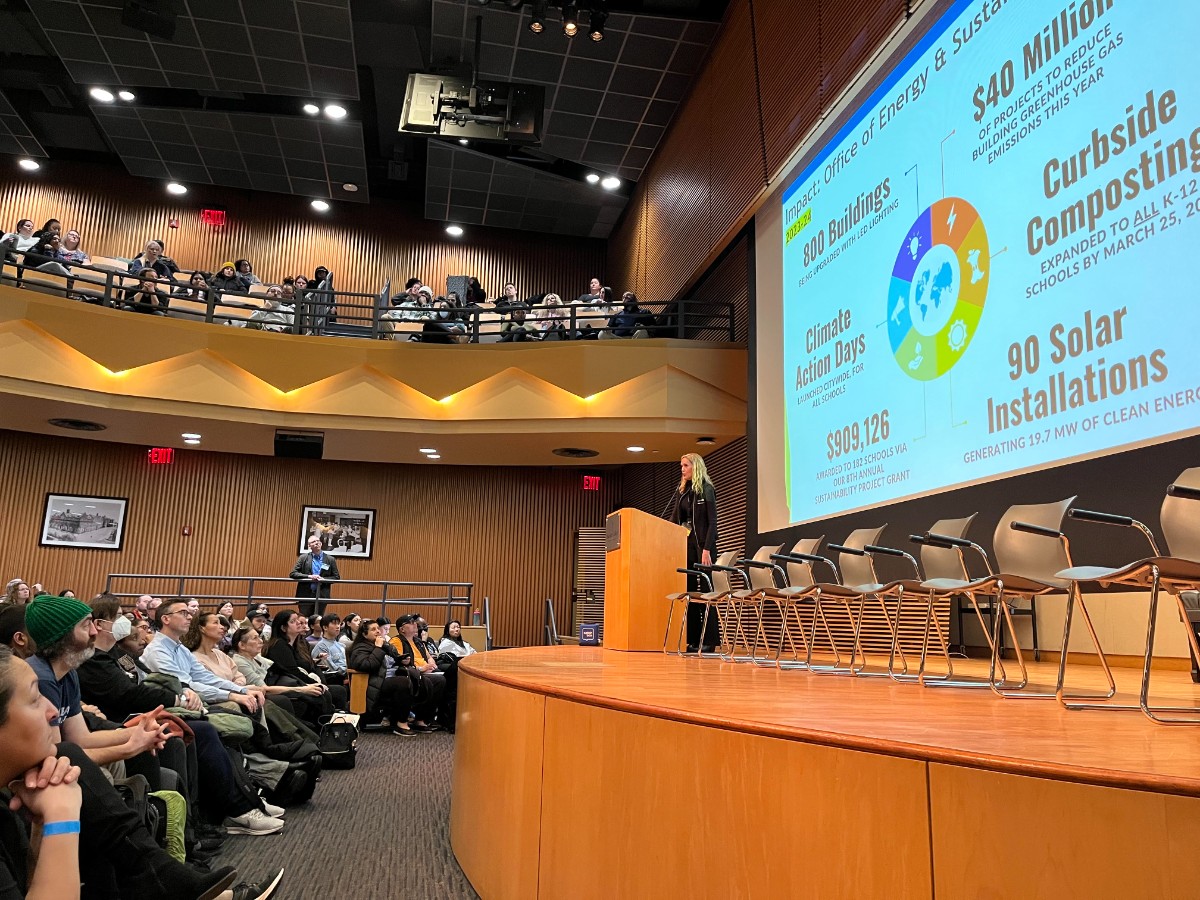The NYC Public Schools Winter Climate Institute for NYC educators spanned three days (two days in person at Teachers College and one day remote). The Institute hosted over 50 unique workshops for educators including 10 workshops run by NYC public school educators. Close to 600 people, including NYC public school teachers, presenters and NYC public school staff, came to Teachers College, Columbia University to learn more about how to integrate climate education into NYC public schools. Mayor Adam’s PlaNYC provided generous support for the Winter Climate Institute as a commitment to making NYC more climate literate and resilient.
Dr. Carine Verschueren started off the event with an opening address. In her speech, she said “climate education empowers people with the knowledge, skills, values, and attitudes needed to act as agents of change”. These words set the tone for the Winter Climate Institute. Vershueren identified the essential role teachers play in delivering climate education that is context specific and culturally relevant for their learners.
Meredith McDermott, NYC Public Schools Director of Energy and Sustainability, informed the attendees that due to funds saved by climate-oriented school infrastructure upgrades, one million dollars were given in grants to schools for Climate Action Day. Further, all schools will be composting by the end of March 2024. Elijah Hutchinson, the Executive Director of the Mayor's Office of Climate and Environmental Justice underlined that 80% of solar energy in the city is coming from school rooftops. These city-wide climate updates are set to have serious impacts for more than one million students in NYC public schools in approximately 1800 schools.
Two masters students affiliated with the Center for Sustainable Futures, Noa Urbach and Sarah Lewis attended the Climate Institute. Noa attended two sessions. The first session was entitled Addressing Climate Education Through Amplify Science hosted by Greg Borman and Dr. Kory Benett. In this session, the discussants talked about the challenges of integrating climate education into the curriculum. She noted that “Learning standards can, at times, make integrating climate education into the curricula challenging. Teachers are often the ones making decisions about how they will include climate learning into the curriculum while still being able to teach to learning standards”.
The second session Urbach attended was, Environmental Justice Education and Action through the Arts hosted by Daniela Castillo, Green Light District Director of El Puente. She shared that this session focused on poor air quality in Brooklyn as an environmental justice issue. Inspired by Paulo Freire’s, Pedagogy of the Oppressed, El Puente sees community partners they work with as ‘experts’ in their own experience with poor air quality. Dance, flash mobs, theater, and mural art are used as tactics for environmental activism to draw attention to how lower socio-economic status neighborhoods are disproportionately affected by environmental issues.
Sarah Lewis attended two sessions: Catalyzing Energy Efficiency Through Transformative Education of Passive House Building Science and Exploring Sustainability through Nature and the Arts. In the first workshop, hosted by Passive House for Everyone, introduced attendees to the five principles of energy efficient architecture, such as air sealing and insulation. They teach these principles to K-12 students in their workshops. Lewis took away two main ideas. First, transitioning to renewable energy cannot happen without, or before, we reduce our energy consumption. Our grid simply can't support it. Second, since the built environment accounts for 40% of emissions globally (70% in NYC) meaningful reductions in energy need to happen there.
The other workshop Lewis attended was hosted by the Children’s Environmental Literacy Foundation. For this workshop attendees were taken outside to Riverside Park to partake in two activities designed for students. Both were about mindfulness, slowing down, noticing, connecting to nature. “The facilitators connected these aspects to scientific processes such as observation, data collection, and creating hypotheses” said Lewis. In the first activity each participant took a paint sample and was asked to look for that shade in the park. The second activity was called Eco Rhythms and consisted of listening to ambient noise, and recreating those noises with instruments. Lewis shared she listened for patterns, made relations between different noises, and transferred these natural sounds to the instruments.
The Winter Climate Institute was full of exploring the nuances of climate education and celebrating the multitude of partnerships that exist in the city that are committed to climate justice. This is very exciting work and it is incredibly heartening and inspiring to see the partnership between Teachers College and NYC Public Schools grow and strengthen in this way. While there is much more work to do, NYC public schools and educators are making strides toward integrating climate learning and action into their school communities.
